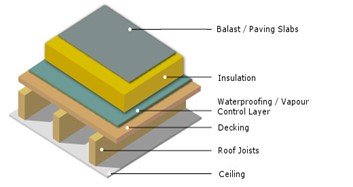Discover the importance of a vapour barrier on your flat roof
The Vapour Barrier
When you are having your flat roof installed, most often people will ask, “How will it be insulated?” Nobody wants a room that’s going to get damp and mouldy, particularly in areas where family gatherings are commonplace in open plan living areas, kitchen extensions and offices spaces for example. The most usual installation these days would be a warm flat roof to keep your room warm and dry and protected from the elements. This roof structure should also have a very important layer of protection called the Vapour Barrier.
FAQs
It provides a very important layer of protection
These days more and more of us are having flat roof extensions to use as offices, utility rooms, bedrooms, and open plan living spaces for the family – basically where people gather, and a very important layer of protection to add to the components of your roof structure will be the Vapour Barrier.
A vapour barrier helps to prevent mould
The vapour barrier will wick away moisture, which will help to avoid any development of mould and mildew. From a health perspective, this is good news for those who may suffer from breathing or respiratory difficulties such as asthma.
It helps to prevent water vapour from seeping into the building materials
The vapour barrier is considered as an important component because it helps to stop water vapour from entering building walls, ceilings, attics and roofs which eventually causing building materials to rot.
A vapour barrier can be installed within both Warm and Cold flat roof structures…
A warm flat roof installation is the most usual and effective method used today, and with it the vapour barrier is installed on the warm side of the insulation (in other words, on the room side of the insulation). This will then restrict the flow of warm moist air from entering the structure, and so protect the room from getting damp and mould. Another way to think about it is, what happens when you wear a woolly jumper on a cold day? You are feeling cosy, warm and dry – but then it rains. You put on a coat to protect yourself from the weather, but soon begin to feel damp and uncomfortable. Why? Because the warm moisture from your skin has
Warm Flat Roof Structure

no where to come once your coat gets wet. These days we are more savvy about the elements, and know a bit more about layers that can wick away moisture. This is what the vapour barrier does. It’s a wicking layer for your roof.
Cold Flat Roof Structure

To sum things up, the vapour barrier will prevent condensation from entering your walls and ceilings which can over time cause damage to the building materials and plasterboard in your roof structure. It will also prevent damp from penetrating the insulation, therefore cutting down on heat loss going through your roof and saving on energy bills.
